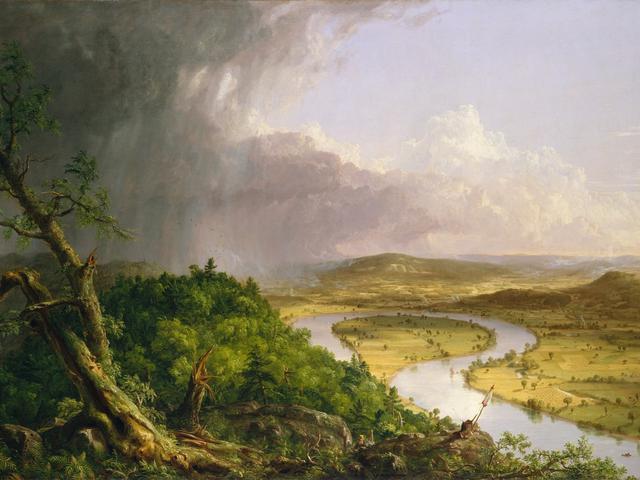El oxbow

Thomas Cole is often considered the founder of the Hudson River School and therefore the "father" of American landscape painting. Born in England, he emigrated to Ohio with his family when he was 17 years old, and after a brief and unsuccessful career as a portrait painter. He began to show interest in the landscape of his adopted country, especially the Hudson River. Cole's works inspired many famous American landscape painters of the following decades, such as Asher Brown Durand and Frederick Edwin Church.
In the mid-1830s, Thomas Cole received the important commission to paint "The Course of Empire," a large series of five canvases for his patron Luman Reed. The second work in the series, "Pastoral State" or "Arcadian State" was received with enthusiasm by Reed, who encouraged Cole to create a second version of the painting, but based on real landscapes known to the artist. Thomas Cole agreed and told Reed that he had already begun to see Mount Holyoke, the best scene. He has it in his sketchbook.
View from Mount Holyoke, Northampton, Massachusetts, after a storm, as it is officially known, is the most famous landscape painting in the United States. It was made in 1836 by the Bolton-born émigré Thomas Cole, founder of the father of the Hudson River School, painters who captured the New World for its growing economic elite.
On one side is the desert, a lush tumult of swirling leaves and wind-arched trunks. On the other, farmland was established. In the center, the painter himself looks at us. Below him, the Connecticut River becomes a big question mark.
Cole imbued the landscape with the moral messages found in historical painting. His vision of chaotic nature in the face of man's civilizing influence was read as an endorsement of westward expansion.
© Tourblink